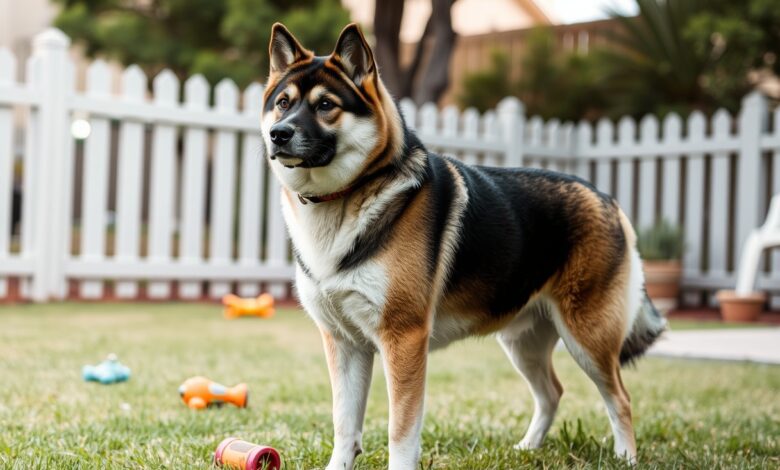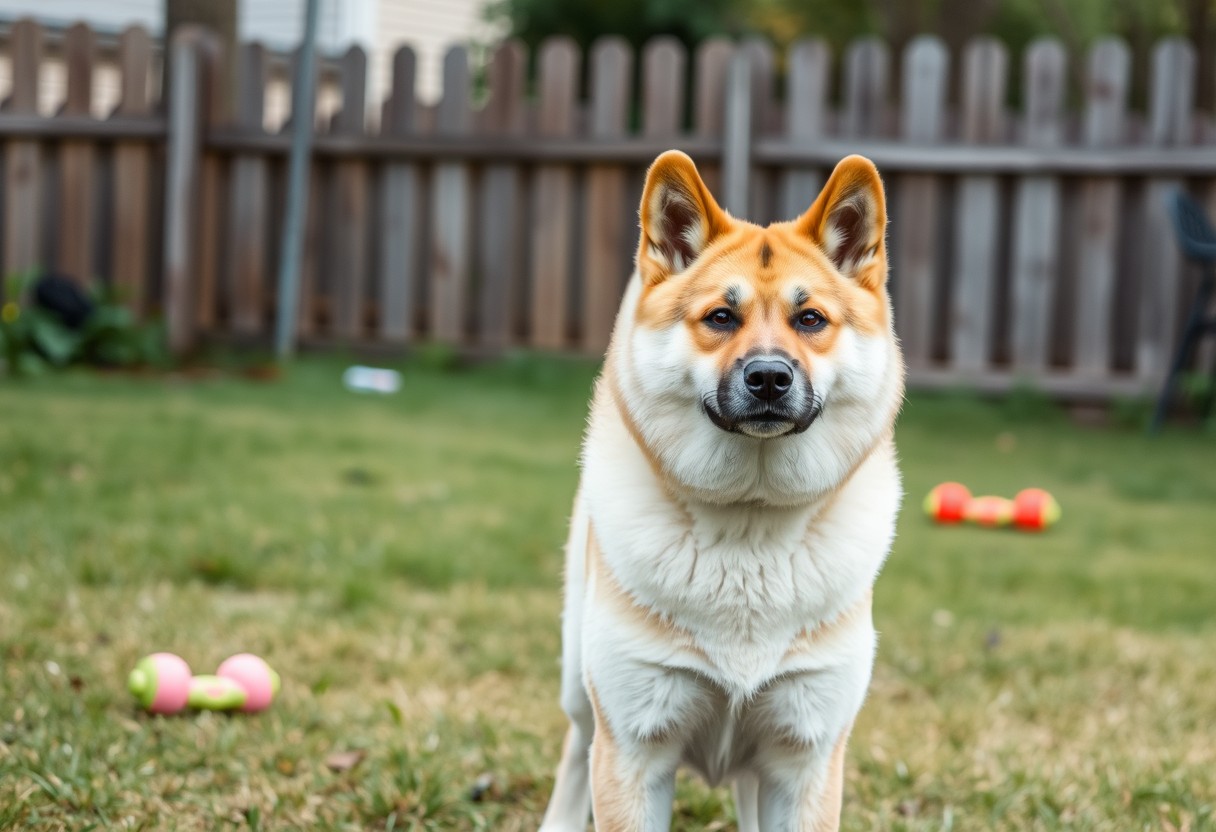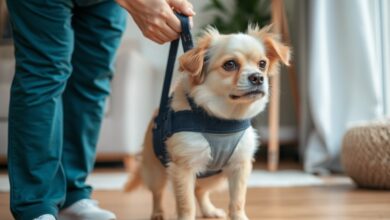Japanese Akita Attacks – What You Need to Know

Over the years, Japanese Akitas have gained a reputation for their loyalty and protective nature, but they can also be involved in dangerous incidents if not properly trained or socialized. As a responsible owner, it’s important for you to understand their behavior and recognize the signs that indicate potential aggression. In this blog post, you will learn necessary information about preventing attacks and fostering a safe environment for both your Akita and the community. Your awareness and proactive measures can make all the difference in enjoying a harmonious relationship with your pet.

Key Takeaways:
- Understanding Behavior: Japanese Akitas are known for their loyalty but can exhibit aggressive tendencies if not properly socialized.
- Training Importance: Consistent training and socialization from an early age are crucial to mitigate potential aggression and ensure safe interactions with people and other animals.
- Owner Responsibility: It is important for Akita owners to be aware of their dog’s behavior and to take proactive measures to prevent aggressive incidents, including seeking professional help when necessary.
Understanding the Akita Breed
Your journey into understanding the Akita breed begins with recognizing their rich heritage and unique traits. As an ancient Japanese breed, Akitas are known for their strength, loyalty, and protective nature. With a blend of beauty and power, these dogs can make loyal companions when properly guided and socialized. Knowing their background and behavior is imperative for ensuring a harmonious relationship with your Akita.
History of the Japanese Akita
Along with being a companion, the Akita has deep roots in Japanese history, originally bred for hunting and guarding. This noble breed evolved from the ancient Matagi dogs, serving as courageous hunters in the rugged regions of Japan. Over the centuries, Akitas became revered symbols of loyalty and fidelity, epitomized by the famous story of Hachiko. (The Akita’s significance in Japanese culture reflects its value as a devoted companion.)
Characteristics and Temperament
With their distinctive traits, Akitas are recognized for their strong loyalty, unique independence, and formidable protective instincts. These characteristics can lead to aggressive behavior if you do not manage it through proper training and socialization. Understanding these traits is imperative for fostering a positive environment with your Akita, as their natural tendencies can pose challenges if left unchecked.
Temperament plays a critical role in the Akita’s overall behavior. They are known as stubborn and strong-willed, requiring a confident owner who can establish their position as leaders. Proper training is imperative to channel their protective instincts positively, helping avoid instances of aggression. While their loyalty can create a bond unlike any other, untrained Akitas may perceive unfamiliar situations or people as threats, potentially leading to aggressive actions. Striking a balance is vital for enjoying the full benefits of sharing your life with an Akita.

Causes of Aggression in Japanese Akitas
Some Japanese Akitas may exhibit aggression due to various factors. Understanding the underlying reasons can help you manage and mitigate these tendencies. Addressing both genetic and environmental influences is imperative for promoting a stable and friendly demeanor in your dog.
Genetic Factors
Before considering aggression in your Japanese Akita, it’s important to acknowledge that some behaviors stem from hereditary influences. Certain breed tendencies can predispose your dog to aggressive behavior, especially if there is a familial history of such traits. Dog owners should ensure that they are aware of any lineage issues related to aggression. Knowing this can assist you in selecting the right Akita for your household.
Environmental Influences
Along with genetics, your Japanese Akita’s environment plays a significant role in shaping behavior. Early socialization and proper training can significantly reduce aggressive tendencies in your pet. (Prioritize socializing your Akita with other dogs and people to foster positive interactions.)
Influences such as inconsistent training, a lack of social exposure, or negative experiences can lead to aggressive behaviors in your Akita. If your dog has faced stressful or threatening situations, it may react defensively as a result. Positive reinforcement and structured routines can help establish a sense of security. (Ultimately, creating a positive environment is key to nurturing a well-adjusted companion.)
Warning Signs of Aggression
Despite their loyal and loving nature, Akitas can display aggressive behavior if not properly managed. It’s vital to recognize the warning signs early to prevent escalation. Aggressive tendencies may manifest through various behaviors, posture changes, and reactions to certain situations. By being attuned to these signals, you can help ensure a safe environment for both your dog and those around you.
Behavioral Indicators
Along with their gentle temperament, Akitas exhibit specific behaviors that may indicate growing aggression. Pay close attention to signs like growling, bark warnings, and altered body language such as stiffened posture, bared teeth, or a fixed stare. These indicators serve as crucial warnings that your Akita’s comfort level is diminishing, signaling a potential outburst if not addressed appropriately.
Situational Triggers
Behind every aggressive encounter, there are underlying situational triggers. Common scenarios include unexpected encounters with strangers, aggressive interactions with other animals, or perceived threats to you or their territory. Your Akita may feel compelled to protect or defend, leading to aggressive responses. Understanding these triggers allows you to anticipate potential issues and take preventative measures.
Hence, being proactive in managing these situations can significantly improve your Akita’s behavior. For example, if your dog has a history of aggression when approached by unfamiliar faces, it is wise to socialize them gradually and in controlled environments. Additionally, employing basic obedience training can strengthen your bond and help your Akita feel secure, reducing the likelihood of aggression in everyday settings.

Preventing Aggression in Japanese Akitas
For effective prevention of aggression in your Japanese Akita, early intervention is key. Providing your Akita puppy with exposure to a variety of people, situations, and other animals fosters a well-rounded temperament. This early socialization experience is vital in shaping their behavior into adulthood. (Choosing a qualified trainer or socialization program can greatly influence your puppy’s development.)
Early Socialization
Along with socialization, employing appropriate training techniques is crucial for curbing potential aggression. You should consider methods like obedience training, which sets the foundation for discipline, while positive reinforcement rewards good behavior. Establishing your role as a leader helps your Akita understand boundaries and expectations.
Training Techniques
Training your Akita using effective methods can mitigate aggressive tendencies significantly. Obedience training not only teaches commands but also strengthens the bond between you and your dog. By implementing positive reinforcement, such as treats or praise, you encourage desired behavior over unwanted aggression. Additionally, establishing clear leadership provides structure and confidence for your Akita, minimizing behavioral issues.
And when considering training techniques, it’s crucial to remain consistent and patient with your Akita. With each positive interaction, you strengthen their understanding of acceptable behavior. Additionally, avoid harsh disciplinary measures, as they may lead to fear-based aggression. Fostering an environment of trust and understanding will also help develop a harmonious relationship between you and your Akita.
Responsible Ownership and Management
Not understanding the commitment that comes with owning a Japanese Akita can lead to serious problems. Akitas are strong-willed and require consistent training, early socialization, and a deep bond with their owners to thrive. Without these elements in place, their natural protective instincts may lead to aggressive behaviors. (It is vital to recognize that Akitas are not suitable for every household.)
Understanding Ownership Responsibilities
Any potential Akita owner must fully grasp the responsibilities involved. You will need to dedicate time to training your Akita, engage in socialization with various people and pets, and build a strong relationship based on trust and respect. A well-trained Akita is less likely to engage in aggressive behavior, making it imperative for your dog’s wellbeing and the safety of those around you.
Responding to Aggressive Incidents
Above all, when your Akita shows signs of aggression, it’s important to remain calm and assess the situation carefully. Make sure to create a safe distance between your dog and any potential threats. You should intervene calmly, without raising your voice, and avoid any actions that may escalate the situation. Use positive reinforcement to redirect your dog’s focus away from the incident, ensuring both your dog’s and the public’s safety.
Ownership of a Japanese Akita involves understanding how to deescalate situations where aggression may occur. You should prioritize safety by keeping your Akita on a leash in public spaces and consider using a muzzle in situations where aggressive behavior might be a concern. Be aware of triggers that provoke your dog, and always remain vigilant to avoid potential incidents that could escalate to danger for you, your dog, or the community.
Consulting Professionals
All Japanese Akita owners should be aware that aggression can be a complex issue requiring expert intervention. If your Akita exhibits signs of increased aggression towards other animals, people, or even family members, it’s vital to reach out to a professional. Early consultation is key to preventing potentially dangerous situations and guiding your dog towards positive behavior changes.
When to Seek Help
By observing your Akita’s behavior, you may recognize scenarios that warrant professional assistance. If your dog displays intense growling, biting, or persistent lunging during social interactions, or if you feel overwhelmed managing their aggression, seeking help from a qualified trainer or behaviorist is crucial. Ignoring these warning signs can result in escalation of aggressive tendencies, putting you and others at risk.
Choosing the Right Professional
Below are some tips for selecting a qualified professional to support your Akita’s behavioral needs. Ensure the trainer or behaviorist specializes in handling large breeds and possesses a deep understanding of the Akita’s temperament. Look for credentials, positive reviews from previous clients, and a humane approach that focuses on building trust and respect between you and your dog.
In fact, a good professional will use methods tailored specifically to Akita characteristics, prioritizing positive reinforcement over harsh techniques. You’ll want to meet with potential trainers to discuss their philosophies and strategies, ensuring they align with your goals. A trainer who understands the exuberance and loyalty typical of Akitas can provide you with the tools to not only manage aggression but also foster a healthy bond, leading to a well-adjusted, secure companion.
To wrap up
So, understanding the potential risks associated with Japanese Akitas is important for your safety and that of others. Educating yourself about their behavior, proper training techniques, and socialization can significantly help you manage your Akita responsibly. If you’re concerned about their aggression or past incidents, you can seek advice from experienced owners through resources like My Akita attacked me (what do you think). By taking proactive steps, you can ensure a safer environment for both you and your beloved pet.
FAQ
Q: What are the common behaviors of Japanese Akitas that could lead to aggressive incidents?
A: Japanese Akitas are known for their loyalty and protective instincts, which can sometimes manifest as aggression. They may exhibit territorial behavior, especially towards strangers or unfamiliar animals. Socialization is key; if they aren’t exposed to various people, environments, and other pets during their critical developmental stages, they may react defensively in new situations. Understanding their body language, such as growling or barking, can also help in recognizing and mitigating potential aggressive behavior.
Q: How can I properly socialize my Japanese Akita to minimize risks of aggression?
A: Proper socialization involves exposing your Akita to various people, animals, environments, and experiences in a positive manner from a young age. Start with puppy classes that allow interaction with other dogs and people in a controlled setting. Gradually introduce them to different environments and situations, ensuring each encounter is positive. Continuous positive reinforcement, such as treats and praise for calm behavior, will help them associate new experiences with positive outcomes. Regular training and engagement in activities can also strengthen their social skills.
Q: What should I do if my Japanese Akita shows signs of aggression towards others?
A: If your Akita displays aggression, it’s vital to address the behavior immediately and safely. First, keep a safe distance from the triggering factor (people or other animals) to prevent escalation. Avoid punishing your dog, as it can worsen the behavior. Instead, consult with a professional dog trainer or behaviorist who has experience with Akitas. They can help you develop a behavior modification plan tailored to your dog’s needs. Consistency, patience, and positive reinforcement will be key in reshaping their behavior.





